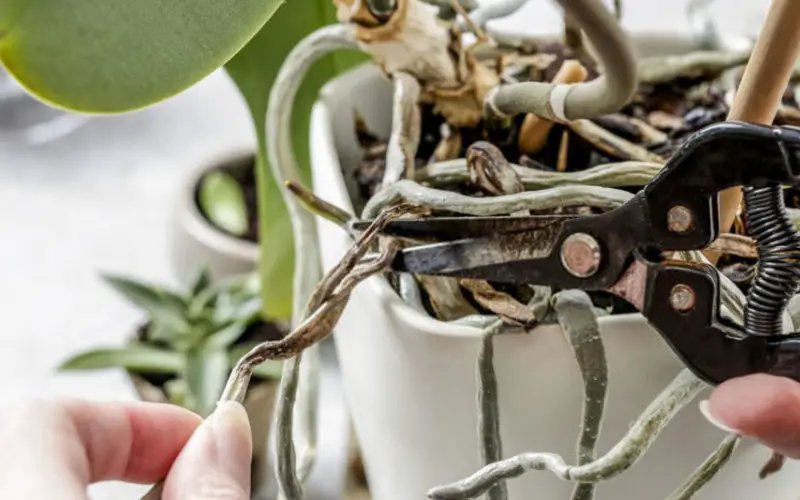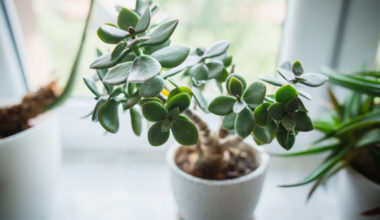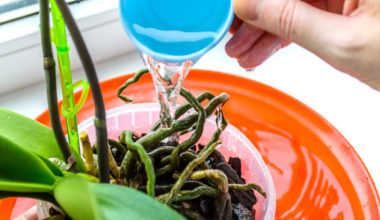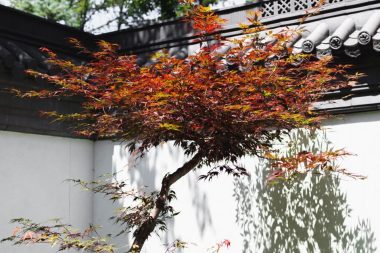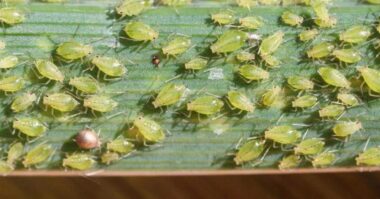Cutting the roots of a plant, and in particular a phalaenopsis orchid, is never an easy task. It is delicate because it can put an end to the life of the plant if it is not well done. Also, some times home gardeners even wonder if they should be cut or not.
To get a healthy orchid that will bloom on time, it is necessary to give it careful care that does not require much time but a little precision. Among these is the cutting of the roots. The objective is to cut the dried roots without hurting the living part
Contents
What to do with the roots of an orchid that grow too much?
Indeed, it can happen that the roots of your orchid grows much more than they need, in most cases, the latter end up drying out and therefore hindering the plant, so it is appropriate to cut them, but not any way! We explain you:
Preparation of the material
Start by disinfecting the scissors by soaking them in alcohol or by passing them under a flame and wait for the alcohol to evaporate or for the scissors to cool down. Disinfecting ensures that you do not bring disease to the plant. Then, prepare a healthy, dry substrate to replace the orchid in once the cuts are finished.
Cutting the dry roots
The first thing to check for is dried out roots on the plant. These types of roots are useless, even disabling, to the plant. Therefore, there is no need to think about it, it will be necessary to cut them quickly enough so that they do not spread. But, it is necessary to avoid cutting the living roots which are next to it.
Cutting brown roots when repotting
Every year when repotting and when the whole plant is in the open air, it will be necessary to see the roots that are no longer viable for the phalaenopsis orchid. Generally, they are of brown color, and they are quite grouped in the center of the roots.
It is imperative to cut them because they will no longer be useful to the plant, and they may even contaminate the other living roots. Moreover, cutting them off will free up space and therefore you will not necessarily have to provide a larger pot.
Taking care of the plant after cutting
The first thing to do is to treat the remaining roots with aliette (fungicide & bactericide) to avoid their rotting. Then, you must put the plant back in a new substrate.
If you don’t have a greenhouse, wrap the plant in a transparent plastic bag and let some air circulate. Always make sure to place the orchid in a place with plenty of light but not in direct sunlight, in a humid place and at a temperature of about 68°F.
Do I have to cut the roots of my orchid if they overflow from the pot?
Don’t panic, orchids with overflowing roots are in great shape! When the roots are fleshy and firm, everything is fine. However, when parts of the roots or the tips dry out or rot, this is not a good sign – they should be cut off as explained in this article.
Some tips about orchid roots
How can you tell the difference between orchid stems and roots?
Look at the roots: They always come out at right angles to this plane (more or less, it’s not a perfect geometry). And when they point the tip of the nose: The stems are slightly flattened laterally, the roots are cylindrical in section.
Can an orchid bloom again?
If you regularly cut off the wilted parts, your orchid can bloom again for about three to five years, provided it is regularly repotted. If the stem has dried to the base, cut it short.
How to grow orchid roots?
The best way to grow new roots is to put the orchid in complete hydro culture. This consists in placing your orchids in pots without any substrate at the beginning, but above a water bottom so that new roots feeding on the humidity of this new climate are formed.
How to straighten an orchid stem?
Stakes force the plant and the flower stem to stand upright. But, if it is happy, the orchid will grow a lot and take on a drooping habit. This is not practical if you want to keep the plant in a pot. By repotting, you can use stakes to straighten the plant’s habit a little.
Why are the roots of my orchid turning black?
Greyish and dull. This is a sign that the plant is lacking water. It is necessary to proceed to the bath by watering the plant abundantly. Drain the pot well before putting it back in the dry pot holder.
